Experts Reveal All The Facts And Secrets About Moonshine
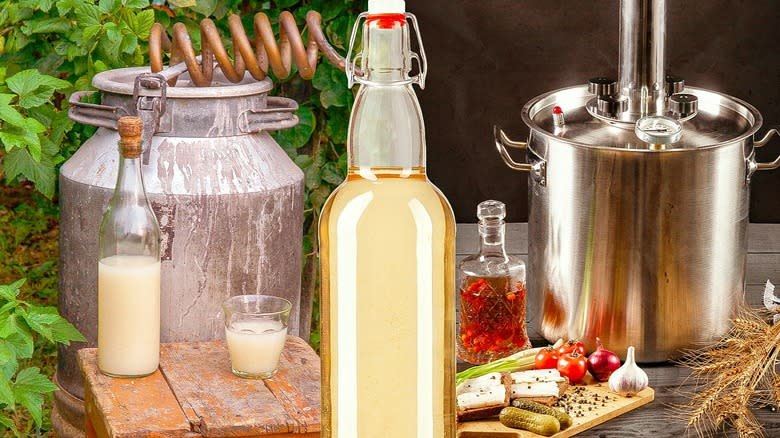
What is moonshine? You have probably heard of this elusive, high-proof liquor, and it might bring bootlegging or Prohibition to mind If you grew up in rural parts of America and had adventurous friends, maybe you've even tasted the alcohol before. The flavor is generally bitter and the alcohol taste is striking. There is no regulated definition of the liquor. Have you wondered what makes moonshine so strong, and whether it is harmful to your body?
To get a better grasp of what moonshine is, and when it is worth indulging in, we consulted a couple of experts: Leah van Deventer, a writer, editor and content manager in alcohol and liquor who is a frequent judge at bars and a member of many alcohol-related industry panels; and Aubrey Slater, the Chief Brand Development Officer and Head Mixologist at Saint Luna, a distillery that specializes in moonshine. Between van Deventer and Slater, we were able to paint a clear picture of the way moonshine was traditionally distilled, how it is made today, and the best ways to drink it.
Read more: Popular Vodka Brands Ranked From Worst To Best
What, Exactly, Is Moonshine?
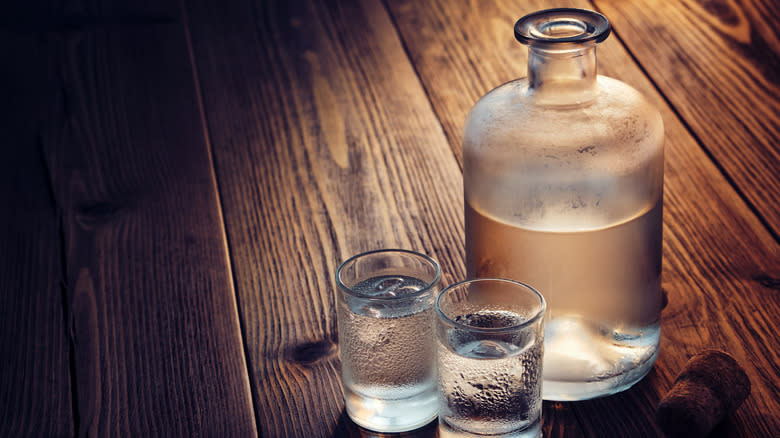
As expert moonshine mixologist Aubrey Slater explained to us, "Moonshine is any spirit that is distilled without government consent. It is traditionally non-taxed, unregulated and over proof." Reading between the lines, this means that moonshine is usually an illegally brewed, exceptionally strong liquor. "Imagine distilling in the woods in the cloak of moonlight," said Slater, painting a vivid and romantic picture of how moonshine is traditionally brewed. "You need a fast process, which is why moonshine is a single distillate that is unaged and typically clear." So moonshine is made quickly, and it's typically made by amateur distillers.
The term moonshine has been around for hundreds of years, referring to any liquor that was made secretly to avoid taxes or prohibition restrictions. During the 18th century in England, moonshine was any illicit alcohol made or smuggled into the country. In the U.S., moonshine has roots in Pennsylvania, where whiskey distillers began making moonshine in protest of excessively high whiskey taxes that were instituted after the Civil War. Whiskey happened to be heavily consumed during this time, so producers were very unhappy. This tax was so widely hated that it led to an armed uprising in Pennsylvania known as the "Whiskey Rebellion" from 1791 to 1794. During Prohibition, the production of moonshine exploded, though it has been less widespread since the ban on liquor ended in 1933. Now, much moonshine production is done by legal, regulated distillers.
How Is Moonshine Made?
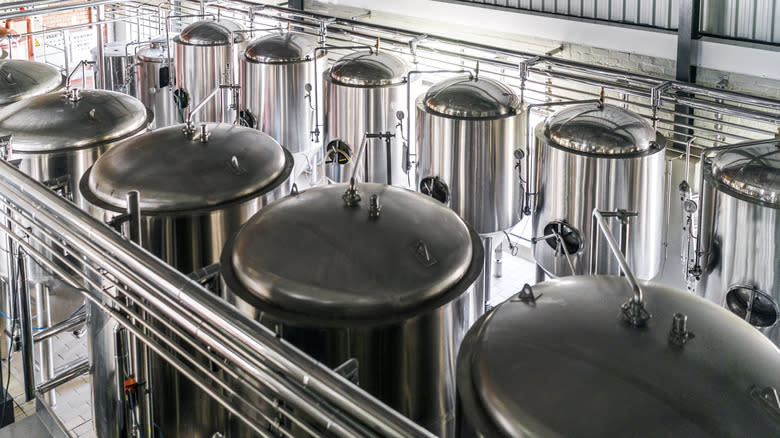
Because moonshine is unregulated by the government, does that mean that its production process is different from that of other alcohol? Perhaps it will surprise you to learn that, in fact, moonshine is made very similarly to pretty much any other liquor. Our experts pitched in to explain to us exactly how moonshine is made. Aubrey Slater explained, "You start with your fermentable base, whether it be grain or fruit or any combination of the two. Once you have your recipe fermenting, you'd start the distillation process and voilà, you have a moonshine."
Leah van Deventer went further, explaining that oftentimes, in the U.S., moonshine is simply an unaged whiskey, a liquor of mysterious origins. "Moonshiners typically mash corn, rye or wheat, add sugar and water, and then boil and distill the mixture in a homemade still," she explained. And while moonshine is associated with homemade, low-grade alcohol, there are plenty of moonshine brewers who take great pride in their product, having worked hard to develop a smooth, delicious drink. Slater told us about the moonshine made at Saint Luna, telling us, "Saint Luna spent nearly 20 years perfecting the recipe we have now, which is why it's such a silky-smooth spirit."
You Can Make Moonshine With Pretty Much Any Ingredient
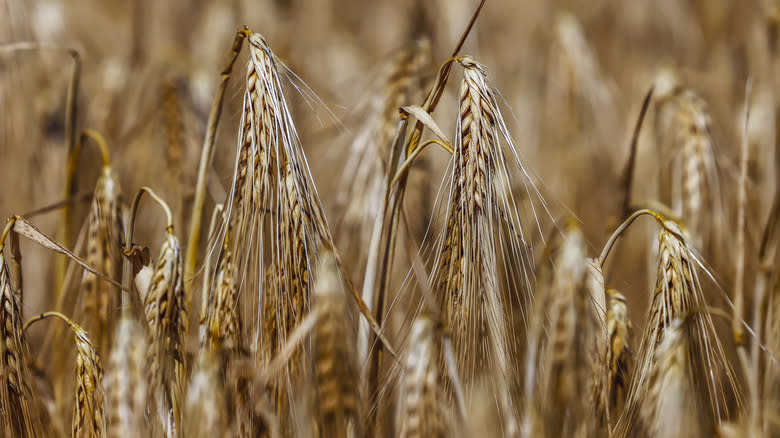
Most alcohol is distilled using very specific recipes. Tequila uses agave, gin uses juniper, and so on. But not moonshine. Because moonshine isn't officially defined in the way that tequila, gin, and other liquors are, moonshine can be distilled using pretty much any ingredients. Leah van Deventer explained that usually, people use corn, rye, or wheat. However, moonshine can also be made with anything: fruit, potatoes, even jalapeños (although this last option is probably ill-advised).
Aubrey Slater explained, "The process to make moonshine gives you much more freedom to combine fermentable ingredients. It's freedom of expression and years of cultivating a special mash bill." She gave the example of Saint Luna's moonshine, which is made with molasses and rye, and then charcoal filtered. "You end up with a beautiful spirit that has elements of caramel, smokiness, and beautiful grassiness," she told us.
How Is Moonshine Different From Other Alcohol?
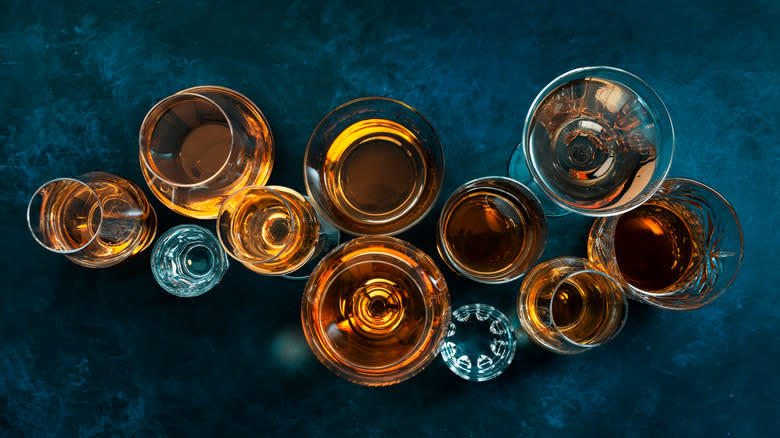
One difference between moonshine and other alcohol is that it can be made with a variety of ingredients. Beyond that, however, there are several differences that step from moonshine's unique history as an illegally brewed beverage. Leah van Deventer told us, "The most obvious difference between moonshine and traditiona[l] liquors is that moonshine is strong stuff, with an average proof of 120." That means that, on average, moonshine is 80% alcohol -- only a little bit lower than ethanol, which is 95% alcohol. You wouldn't expect this to make a very smooth drink. Van Deventer went on, however, telling us, "As the distillation process is pretty basic, you can also expect it to be quite rough, due to impurities."
That said, if a bar offers moonshine, it is not the 120-proof, rough liquor that van Deventer is describing. There are plenty of bars and alcohol producers that are looking to reclaim and rebrand moonshine, such as Saint Luna. These distillers are taking the loose definition of what the alcohol needs to be to get creative and make delicious, smooth, and unique alcoholic experiences for their consumers. So if you see moonshine on a menu somewhere, there is no need to fear for your safety.
When Is Making Moonshine Illegal?
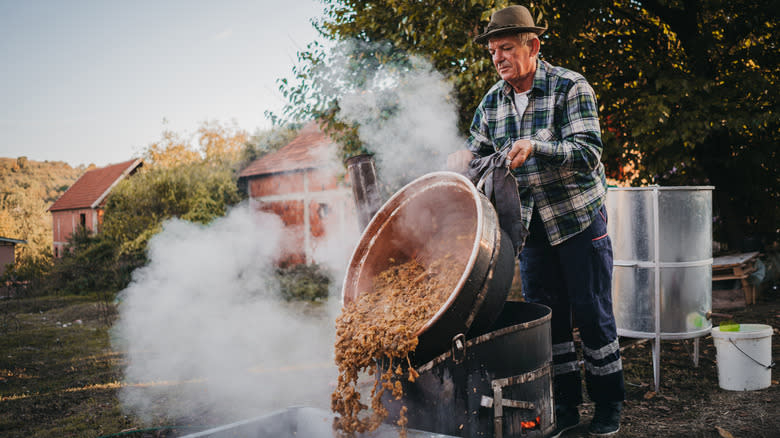
As Leah van Deventer told us, "Moonshine is not technically a category of spirit, but rather a broad term used to refer to any liquor that has been distilled illegally, or in an unregulated manner." This means that oftentimes, moonshine is illegal to make and definitely illegal to sell. There are bars and distilleries, however, that have moonshine on their menus -- places like Saint Luna, as Slater explained to us, that pride themselves on their moonshine. So what gives? When is moonshine illegal, and when is it legal?
Professional distillers are creating what is basically a clear alcohol. They have a government-issued permit to brew it, and the term "moonshine" gives them some leeway as to what can actually be in the spirit. Moonshine has no regulative definition, as many liquors do; this means that the term "moonshine" is not a technical term, but a marketing tool used by bars and other distributors to draw in customers.
Why Moonshine Has A Bad Reputation
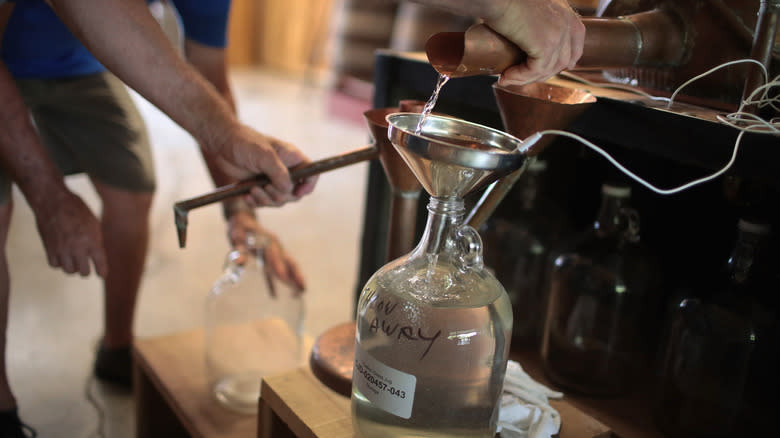
Moonshine is usually associated with alcohol that is extremely strong and bitter. This negative association stems from the fact that moonshine is traditionally made by amateur brewers in their backyards. Leah van Deventer explained the name "moonshine" itself "com[es] from the notion that this booze is made and distributed stealthily, by moonlight." Because moonshine was unregulated and often illegal, there was no quality control that protects drinkers from an extremely powerful and bitter drink.
You may not know what you're going to get when you choose moonshine. Aubrey Slater explained to us that the quality can vary drastically. "Some moonshines have a bitter overproof taste," she told us, "And oftentimes you'll see people infuse bitter moonshine with fruits and spices to mask the flavor. It's why moonshine can have such a negative connotation." Slater and Saint Luna have been on a mission to change this connotation, she told us. Their recipe aims "to show that moonshine can in fact be delicious and beautifully made."
The Best Ways To Use Moonshine In Cocktails
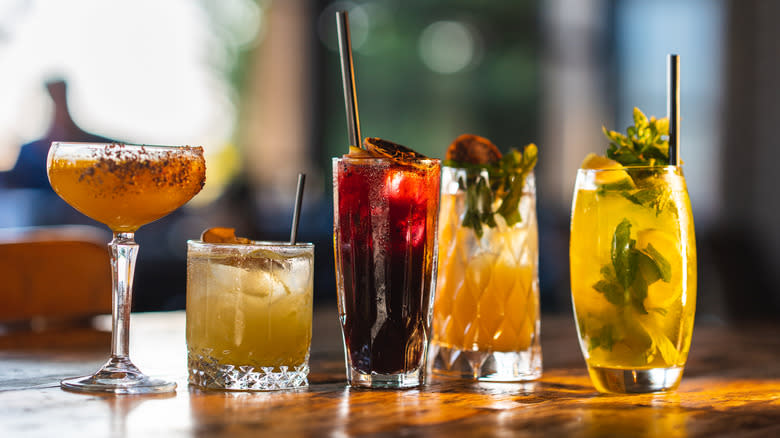
When it comes to legally produced moonshine, the options for consumption are endless. Aubrey Slater told us that her favorite way to drink Saint Luna moonshine is on the rocks. "You taste all of the nuance of the spirit from the grassy rum to the spicy rye," she told us. She also explained, however, that she has made many different cocktails using moonshine, "ranging from twists on margaritas to delicious Negronis, and all sorts of tiki-based cocktails." The options are truly endless, as high-quality moonshine is very versatile. Slater told us about her absolute favorite cocktail to make, which she calls the Pink Corvette; it "features Saint Luna, guava juice, cinnamon simple syrup, lemon, Luxardo, and a bar spoon of absinthe."
If you are not drinking high-quality, legally produced moonshine, you have to be a little more careful about how you consume it. Because of the high alcohol content, it is important not to drink it straight or to have too much of it. This is why Leah van Deventer suggests diluting your moonshine before drinking it. She also gave some suggestions for mixed drinks, saying, "You can serve it in the same way you like your whiskey, so perhaps with Coke or ginger ale, or perhaps even iced tea." While all of these options sound absolutely delicious, one must also remember to consume moonshine, regulated or not, responsibly.
Read the original article on Mashed.


